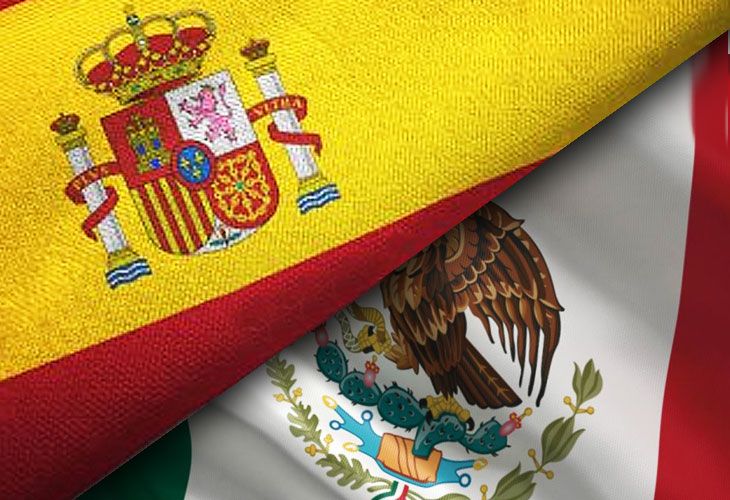The measure takes effect on February 1; Restrictions on GB passengers extended
Spain will require travelers from risk countries, including Mexico, PCR diagnostic tests to detect the coronavirus, starting at midnight on February 1, the embassy of the European country in Mexican territory reported on its Twitter account.
The PCR must be negative in the 72 hours prior to the arrival of the traveler to Spain, in accordance with the updated regulations of the Ministry of Health.

The Government of Spain also agreed to extend the restrictions on travel from the United Kingdom until February 16 at least.
“The Council of Ministers has approved a third extension of the agreement that limits direct flights and passenger ships between the United Kingdom and Spain,” the Ministry of Health reported in a statement.
After detecting the existence of a new variant of the coronavirus in the United Kingdom, the Spanish authorities decided, on December 22, to limit the arrival of people from British soil.
Spain will require PCR from travelers coming from 65 countries

Spain will require a negative PCR for passengers entering the country by air or sea from 28 EU countries -such as Germany, France, Italy and Portugal- and 37 third countries -Morocco and the United Kingdom. , among them- made 72 hours before your arrival.
The Official State Gazette has published this Thursday the resolution that establishes this measure after the European recommendation issued on October 13, as well as the list of countries and areas that require a PCR diagnostic test from passengers coming from them with a negative result as an entry requirement.
In the case of the EU or European Economic Area, the inclusion criterion is to be red or gray risk areas and are the following: Germany, Austria, Belgium, Bulgaria, Czechia, Cyprus, Croatia, Denmark (except the Faroe Islands and Greenland), Slovenia, Estonia, France, Greece (except Kitri, Ionia Nisia, Dytiki Ellada and Sterea Ellada regions).
Also included are Hungary, Ireland, Iceland, Italy, Latvia, Lithuania, Luxembourg, Malta, Norway (except Rogaland, Møre og Romsdal, Nordland, Viken, Innlandet, Vestfold og Telemark, Agder, Vestland, Trøndelag and Troms og Finnmark regions ), The Netherlands, Poland, Portugal (except the autonomous region of the Azores Island), Romania, Sweden, Liechtenstein and Slovakia.
The decision, agreed at the Interterritorial Health Council held this Wednesday, includes five clear measures.
A mandatory PCR
Spain will require international travelers a negative PCR prior to arrival in the country in order to enter it. The Health Control Form that every passenger must fill out before entering the country will include a question regarding whether PCR is available and the passenger may be asked to accredit the test result.
Necessary documents
The test document must be the original, written in Spanish or English and may be submitted in paper or electronic format. When the Form has not been able to be completed electronically, through the QR code generated through the web www.spth.gob.es or the Spain Travel Health-SpTH application, it may be submitted in paper format before boarding. In this case, it must be accompanied by the original document certifying the performance of the diagnostic test.

72 hours before
The PCR test must have been carried out in the 72 hours prior to entering the country.
From November 23
The resolution that establishes these new controls will be published tomorrow in the Official State Gazette and entered into force on November 23.
Risk countries
For the designation of risk areas or countries, the basic incidence accumulated per 100,000 inhabitants in 14 days will be taken as a reference, supplemented with the capacities implemented as contemplated in the International Health regulations, based on the information provided by the European Center for Disease Prevention and Control (ECDC).
Previous tests are maintained
The requirement of negative PCR is in addition to the health checks that are already carried out on all international passengers at the points of entry. Thus, it is maintaining temperature control and visual control.
Source: 20minutos.es





